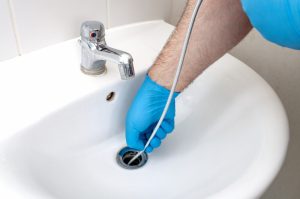Prepare Your Home for the Florida Rainy Season: Plumbing Tips for Homes in Broward County

As the rainy season rolls into South Florida, areas like Fort Lauderdale, Miramar, Pembroke Pines, Hollywood, and throughout Broward County often experience heavy rainfall and unexpected storms. While the rain brings relief from the summer heat, it can also bring about plumbing challenges for homeowners. Flooded yards, clogged drains, and overflowing gutters are just a few of the issues that can arise. At A to Z Statewide Plumbing, we want to ensure your home is prepared for the rainy season, so you can avoid costly repairs and water damage.
Common Plumbing Issues During the Rainy Season
1. Clogged Drains and Downspouts
With increased rainfall, leaves, debris, and dirt can quickly build up in your gutters and downspouts, leading to clogs. Water can then overflow and pool around your home’s foundation, causing potential flooding or structural damage. It’s crucial to keep these areas clear to allow proper water flow.
2. Flooded Yards and Waterlogged Drains
Low-lying areas in your yard can become waterlogged, overwhelming your drainage system. If your drains aren’t prepared to handle the sudden influx of water, they can become clogged, leading to backups inside your home or pooling water in your yard.
3. Sewer Backups
Excessive rain can cause an increase in pressure on your sewage system, potentially leading to backups. If your sewer lines are already compromised or partially blocked, heavy rains may exacerbate the issue, leading to unsanitary conditions inside your home.
4. Leaking Pipes
Heavy rains and fluctuating temperatures can put stress on older plumbing systems, leading to leaks. These leaks may go unnoticed until water damage becomes evident inside your home, so it’s important to regularly inspect your plumbing before and during the rainy season.
How A to Z Statewide Plumbing Can Help
At A to Z Statewide Plumbing, we offer a range of services designed to help Broward County homeowners avoid rainy season disasters:
– Drain Cleaning Services
Our expert team provides thorough drain cleaning to ensure your home’s drainage system is free from blockages. Whether it’s leaves, dirt, or other debris, we’ll make sure water flows smoothly to prevent backups and flooding. We recommend scheduling drain cleaning before the rainy season hits to avoid emergencies.
– Gutter and Downspout Maintenance
Our professionals can inspect and clear your gutters and downspouts to ensure water is properly directed away from your home’s foundation, minimizing the risk of flooding.
– Sewer Line Inspections
Sewer backups can be a homeowner’s worst nightmare, especially during a storm. A to Z Statewide Plumbing can inspect your sewer lines, identify any blockages or weaknesses, and provide repairs before the heavy rains arrive.
– Leak Detection and Repair
If you suspect any leaks in your plumbing system, our team can use advanced leak detection technology to pinpoint the source and repair it quickly, helping you avoid costly water damage.
Schedule Your Plumbing Check-Up Today!
Don’t wait for the storm clouds to roll in. Ensure your home’s plumbing system is ready to handle whatever the rainy season brings. Contact A to Z Statewide Plumbing today to schedule drain cleaning, sewer inspections, or a full plumbing check-up. Our dedicated team serves Fort Lauderdale, Miramar, Pembroke Pines, Hollywood, and all of Broward County, ensuring your home stays dry and problem-free during the rainy season.
Call us at 954-981-2133 or schedule your service online today!
Stay prepared, stay dry, and let A to Z Statewide Plumbing handle the rest.
Trending Topics Right Now
This post first appeared on http://www.atozstatewideplumbing.com









